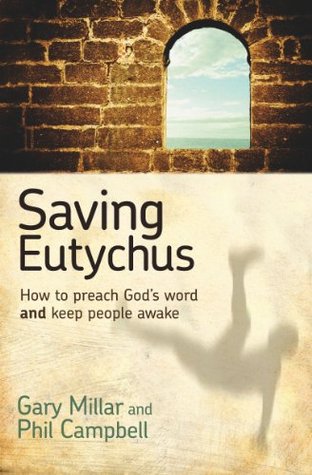More on this book
Kindle Notes & Highlights
These words should also be on your doorposts, wrists, walls, iPhone covers… and anywhere else you might see them. Why? Because the word of God has the power to change us. The word of God has the power to stir up love and obedience and sustain commitment year after year in every generation.
Once you’ve got the big idea, don’t let go. Build your structure around it, then weigh every word and sentence to make sure it’s pushing in the right direction. Don’t be distracted by sidetracks when you’re preparing, and your listeners won’t be distracted while you’re preaching. And, whatever you do, don’t fall in love with your first draft—make every word and paragraph earn its place. 3.
Boldly start sentences with ‘And’ or ‘But’. Or even ‘Or’. It’s usually considered bad form for writing, but it’s great for speaking. Listen to yourself sometime… we almost always do it when we’re chatting. Contract. Use contracted forms such as ‘can’t’, ‘don’t’, ‘won’t’, ‘aren’t’… along with all the other abbreviations we naturally use in daily speech.
Avoid complex, multi-clause sentence structures. We usually speak in simple, direct sentences. Sometimes not sentences at all!
Dave Ritchie taught me that as you’re introducing a new idea, it’s incredibly helpful to restate the first sentence three times, rephrasing it each time but adding no new information. Effectively, the first statement signals that you’ve changed tack, the second helps the listener to start processing the new idea, and the third time begins the next part of the journey.
I could have delivered those two ideas in just 29 words, and then used my spare 194 words to squeeze in 13 more ideas. If you’d been there listening, you would have been glad I didn’t. Repetitions like “most hostile”, “most disparaging” and “laughs loudest” are all making exactly the same point but, like the tennis illustration, they’re slowing the flow of ideas to the point where a listener can easily absorb them.
I’ve heard many sermons based on Old Testament passages that sound more like ancient history lectures than heart-changing messages from the living God because the preacher hasn’t picked up this most basic connection. In the Old Testament we read about people like us—in fact, we read about people who represent us.
If we read and preach the text in stereo, we will make clear that the passage in front of us is representative of our lives and struggles as human beings, and it addresses us as the people of God who are shaped and affected at the most profound level by the coming of Christ. Our preaching will instantly become richer and fuller and more engaging.
How do we do this? We make sure that we connect what God has said in the Old Testament passage we are preaching from with what he has done for us in the Lord Jesus Christ. Then we explain what difference that makes in our lives. That’s preaching the gospel of Jesus from everywhere.
Sermons that ‘follow the plan’ are most natural and effective when there is some kind of forward momentum in the text itself. So, for example, when preaching from Ruth 4, which traces Ruth’s descendants as far as King David, or when explaining the story of Jehosheba in 2 Kings 11 where the same royal line is nearly wiped out, it would make perfect sense to follow the unfolding plan to its fulfilment in the Lord Jesus Christ.
So, for example, when looking at the ‘king’ laws of Deuteronomy 17, or the suffering of the servant in Isaiah 53, or Daniel’s vision of the son of man in Daniel 7, there is no need to ‘touch down’ at multiple points en route to the fulfilment in Jesus. We can just take people straight to the heart of the gospel message.
(e.g. the proud and stubborn Moses in Exodus 6 or the licentious Samson in Judges 13-16), or on the fickleness of God’s people (e.g. Exodus 32), or on their downright wickedness (e.g. Judges 21). In each case, it would be helpful to expose the nature of the problem—inadequate leaders, our inconsistency, our depravity—and show how God tackled these fundamental problems arising from human sinfulness in Jesus’ death and resurrection. The end result is that the sermon takes on a problem-solution form,
Another option is to focus not on a particular attribute of God but rather on what God does. Although not substantially different from highlighting an aspect of God’s character, it is a distinct approach. So, for example, in the story of the plagues in Exodus 7-11, rather than simply explaining the fact that God is all-powerful, we could focus on how God defeats the powers of evil. Similarly, in the David and Goliath incident in 1 Samuel 17, I think the most natural way to deal with the text is to concentrate on the way in which God chooses to take on his enemies, which he then does in an even
...more
build the sermon around a key category. So, for example, rather than focusing on the promises made to Abraham or on how Isaac’s survival was crucial to God’s unfolding plan, a sermon on Genesis 22 could explore the whole idea of substitution, which is introduced and explained by this and a range of other key Old Testament texts.


